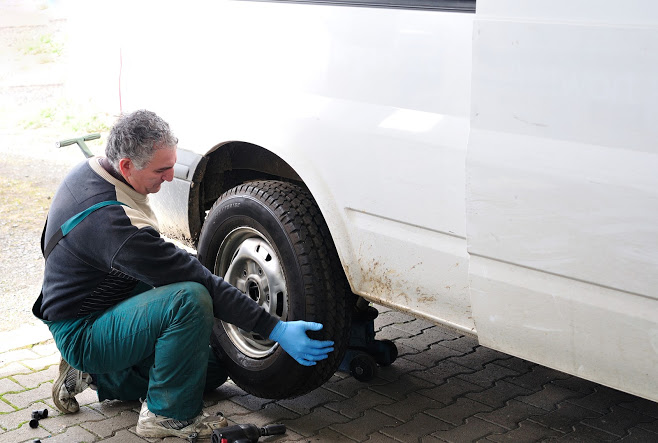Tires are the one part of a vehicle that touches the road, and because of this, they take a lot of abuse. When you understand common causes of tire damage, you can prevent unnecessary harm and prolong the life of your tires.
Failing to Rotate Tires
Even if tires don’t sustain any other type of damage, simply neglecting to rotate them periodically can lead to premature wear.
Because tires are in different positions on your vehicle, they wear unevenly. Front tires usually experience more wear and tear than back ones, and the left or right side of a tire might experience greater wear depending on what side of the vehicle it’s on.
This issue is easy to address by periodically rotating tires, which involves moving the back ones to the front and the front ones to the back. Your mechanic will have a specific rotation pattern that ensures each tire is put in each of the four possible places over its life span. They can even follow a pattern that incorporates the spare if your vehicle has a full-size spare tire.
Tires should be rotated every 6,000 to 8,000 miles or every six months. Depending on how often you have your vehicle’s oil changed, this is likely every oil change or two.
Driving Over Potholes
Potholes can do a number on your vehicle if you hit them. They can cause problems with your vehicle’s alignment and suspension, but the most common type of damage is tire damage.
When a tire strikes a pothole, a disproportionate amount of weight is momentarily put on that tire while it’s pressed against a comparatively sharp edge. In some cases, the damage is bad enough that it bends the rim and creates an air leak. In less severe instances, pothole damage can lead to uneven wear and general tire damage.
Bumping Into Curbs
Bumping into a curb usually doesn’t carry the same impact that hitting a pothole on the highway can, but curb damage can also be severe because of where it affects the tire.
When a tire bumps into a curb, the sidewall of the tire is rubbed against the curb. While sidewalls can sustain some impact, they aren’t built for the impact that the threaded part of the tire takes. Thus, a relatively light bump might cause some damage.
Even minor damage from a curb can weaken a sidewall enough to impact how a tire rides. If the sidewall’s integrity is compromised, it won’t support the vehicle as well. The added pressure on it and reduced strength will only get worse with time.
While this is a potential hazard for anyone driving, it’s a particular concern for drivers who regularly parallel park. Even though parallel parking is done at slow speeds and you can quickly stop if you hit the curb, repeated rubbing over the life of a tire could eventually impact the tire’s integrity.
Driving With a Bad Alignment
A vehicle’s alignment determines how the front tires are oriented, and they should be oriented so that they point forward when the steering wheel is straight and are perfectly parallel. As you drive, however, potholes, curbs, and other obstacles can throw off your vehicle’s alignment.
If your vehicle becomes misaligned, the front tires will point in different directions. The difference may not be noticeable to the untrained eye, and your vehicle will likely still be able to drive. The tires will experience increased wear because they aren’t completely parallel, though. Bad alignment is easily fixed by getting a computerized alignment at a service center.
If your tires have been damaged and you need new tires, contact Evans Tire & Service Centers.

